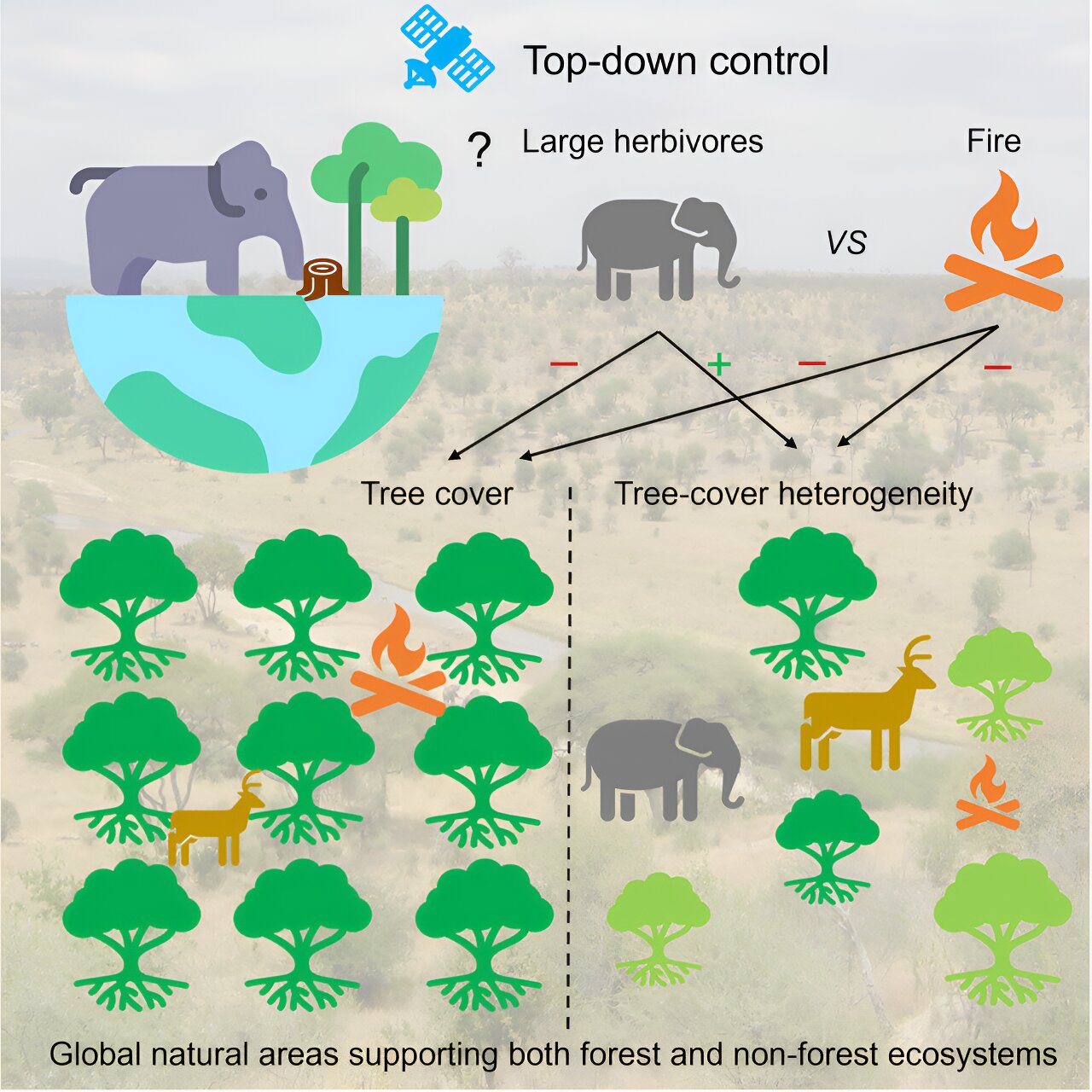Using global satellite data, a research team has mapped the tree cover of the world’s protected areas. The study shows that regions with abundant large herbivores in many settings have a more variable tree cover, which is expected to benefit biodiversity overall.
Maintaining species-rich and resilient ecosystems is key to preserving biodiversity and mitigating climate change. Here, megafauna—the part of the animal population in an area that is made up of the largest animals—plays an important role. In a new study published in the journal One Earth, an international research team, of which Lund University is a part, has investigated the intricate interplay between the number of voracious herbivores and the diversity of trees in the world’s protected areas.
“Our findings reveal a fascinating and complex story of how large herbivorous animals shape the world’s natural landscapes. The tree cover in these areas is sparser, but the diversity of the tree cover is much higher than in areas without large herbivores,” says Lanhui Wang, a researcher in physical geography and ecosystem science at Lund University.
“In our global analysis, we find a substantial association between the biomass of large herbivores and varied tree cover in protected areas, notably for browsers and mixed-feeders such as elephants, bison and moose and in non-extreme climates,” explains the study’s senior author, Jens-Christian Svenning, professor at Aarhus University.
The study supports the idea that large wild herbivores promote a diverse vegetation structure, creating a rich habitat for many other species. This is due to the animals’ consumption of vegetation as well as physical disturbances.
2023-11-04 11:41:03
Post from phys.org


















